Used Ford Ranger Quick Facts
- The best years for a used Ford Ranger are 2021 or newer, but the older 2007-2011 models are also well regarded.
- The first SuperCab debuted in 1986, and the first SuperCrew cab in 2019.
- Early Ford Ranger pickup trucks shared their engines and platform with the Mazda B2000.
The Ford Ranger has been a mainstay of the pickup market for over four decades. Although you know it as a midsize truck today, the Ranger was considered a compact truck for most of its life. The first few generations didn’t offer a crew cab, something Ford remedied when the Ranger revived in 2019 after an eight-year hiatus. If you’re looking for a lightly used modern pickup, choose one riding on the newest platform, preferably a 2022 or newer Ford Ranger. However, if you’re just looking for an inexpensive, rugged little workhorse with a few bumps and blemishes and maybe needing some minor repairs, an older Ranger might be precisely what you’re looking for.
- What Is the Best Model-Year Used Ford Ranger?
- Ford Ranger by Generation: Which Should You Buy?
- What’s the Most Weight a Ford Ranger Can Tow and Haul?
- What’s the Longest Bed I Can Get on a Ranger?
- What Are the Years to Avoid Buying a Used Ford Ranger?
What Is the Best Model-Year Used Ford Ranger?

If you’re looking to save a few thousand dollars but still want the latest safety, engine technology, and capacity, a 2022 or newer Ford Ranger is the best choice. The 2022-2024 trucks mark the return of the Ranger nameplate after a long layoff. The 2024 and newer trucks represent the fifth generation with beefed-up styling, improved engines, and more options. Still, Ford somewhat limits choice, as the carmaker limits the body to a SuperCrew cab configuration with a 5-foot bed.
However, if you’re just looking for a second truck or an inexpensive beater, a third-generation 2006-2011 Ranger fits the bill.
See Ford Ranger trucks near you.
Ford Ranger by Generation: Which Should You Buy?
Fifth Generation (2024-Current)
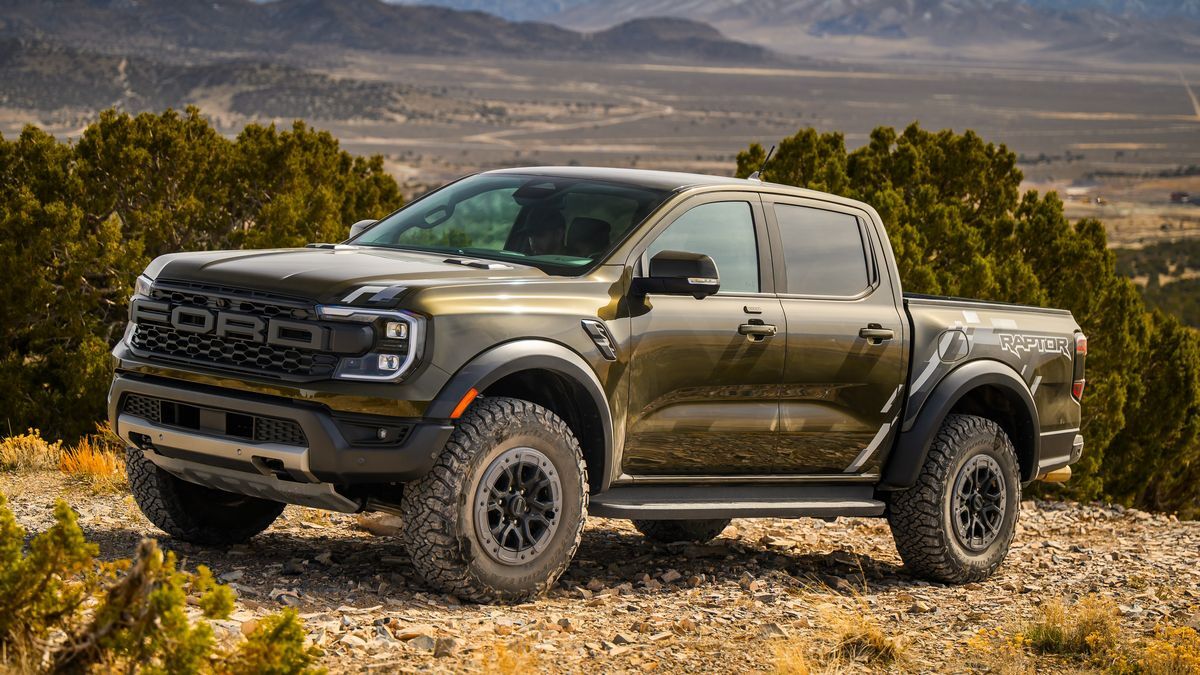
The fifth-generation Ranger builds on the 2019 truck, adding a stronger frame, a more muscular look, and more tech, but fewer choices. Available only in SuperCrew cab with a 5-foot bed, the Ranger offers four trim choices: XL, XLT, Lariat, and Raptor.
Ford’s 2.3-liter EcoBoost 4-cylinder engine, which produces 270 horsepower, is the standard engine on all but the Raptor. A 2.7-liter EcoBoost V6, which produces 315 hp, is optional on the XLT and Lariat. The Ranger Raptor gets a twin-turbocharged 3.0-liter V6, which produces 405 hp.
All but the Raptor are rear-drive, with 4-wheel drive (4WD) optional. Regardless of engine choice, a 10-speed automatic comes standard.
The fifth-generation Ranger can tow up to 7,500 pounds with either the 2.3- or 2.7-liter engines; the Raptor maxes out at 5,510 pounds.
The base XL trim offers all the essentials, including forward collision warning, automatic emergency braking, and lane-keeping assist. It also comes with the STX package standard, which adds 17-inch wheels with all-terrain tires and automatic high-beam headlights. Additional features include remote keyless entry, the SYNC 4A infotainment system with a 10-inch touchscreen, LED headlights, fog lights, an 8-inch digital instrument cluster, manual air conditioning, and cruise control.
Moving up the XLT brings more features, which we think makes this the best trim when it comes to value for the dollar. Ford’s Co-Pilot360 adds blind-spot monitoring, rear cross-traffic detection with trailer coverage, reverse brake assist, lane-keeping assist, and a digital rearview camera. You’ll also get power-folding side mirrors, a manual sliding rear window, navigation, a wireless charging pad, and 120-volt outlets in the cab and bed.
Options for the XLT include several packages that add adaptive cruise control (Technology Package), underbody protection, off-road shocks, and an electronic locking rear differential (FX4 package), as well as a 10-way power driver’s seat, heated front seats, and a 12-inch touchscreen (XLT High Equipment Group).
The Lariat adds more luxury with many of the XLT’s optional equipment as standard. Notable upgrades include leather upholstery, proximity keyless entry and push-button start, rain-sensing wipers, adaptive cruise control, a 12-inch digital cluster, and a 10-speaker B&O sound system.
The Raptor is an off-road beast, equipped with a more powerful engine, standard 4-wheel drive, electronic locking front and rear differentials, Fox racing shocks, Watts link rear suspension, a 360-degree camera, and an additional Baja drive mode for desert high-speed runs.
Some cool options for the Ranger include zone lighting controlled via a phone app, Pro Trailer Backup Assist, and an off-road screen that shows the truck’s pitch and roll angles.
Model-Year Changes:
2024: The Ranger is all-new for 2024.
See 2024 to current Ford Ranger trucks near you.
Fourth Generation (2019-2023)
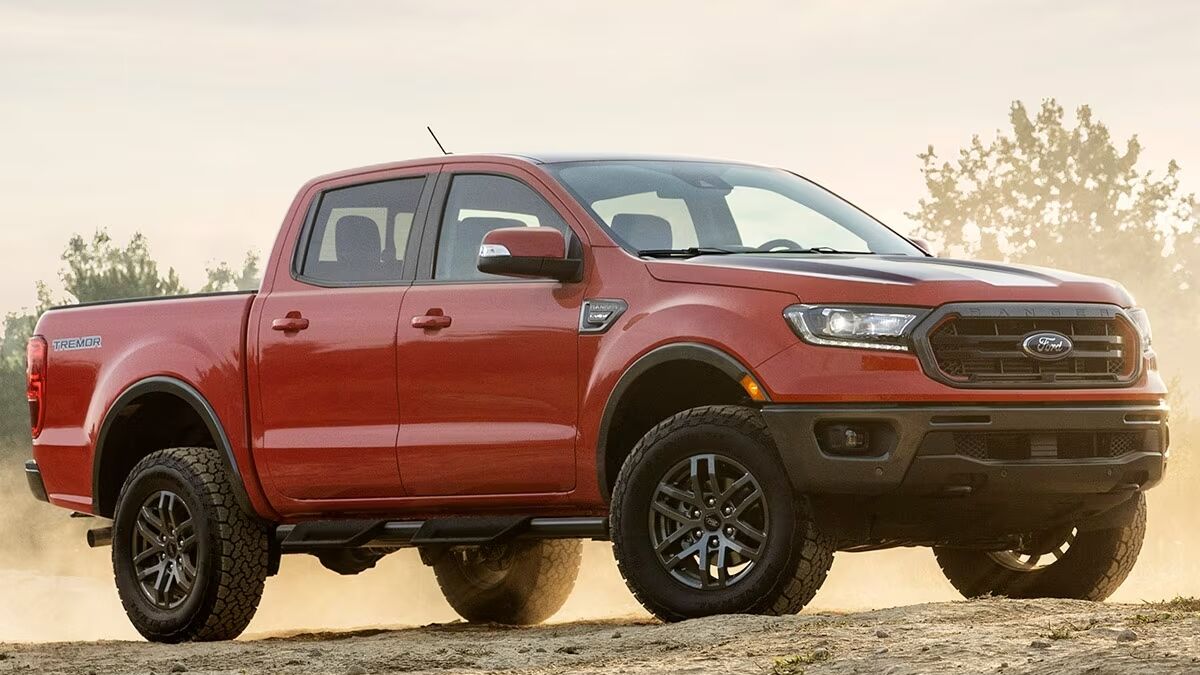
After an eight-year hiatus, the fourth-generation Ranger reintroduced the name to the Ford lineup.
Upon its debut, the Ranger offered two cab styles: SuperCab and SuperCrew. The SuperCab features rear-hinged half doors and a 6-foot bed, while the SuperCrew has full rear doors and a 5-foot bed. Either way, the wheelbase and length remain the same.
The familiar trim levels are XL, XLT, and Lariat. The only engine is a 2.3-liter EcoBoost 4-cylinder rated at 270 hp. It’s attached to a 10-speed automatic routing power to either the rear wheels (standard) or all four (optional). Max towing is 7,500 pounds.
Like the current model, the base XL offers just enough features to make it livable, including forward collision warning and emergency braking. It also includes voice-recognition infotainment with a 4.2-inch display, a rearview camera, 16-inch wheels, air conditioning, power windows, power locks, keyless entry, cloth-trimmed seats, and vinyl flooring.
The XLT adds Co-Pilot360 (blind-spot monitor with trailer coverage, rear cross-traffic alert, lane centering, auto high-beams, and front and rear parking sensors), cruise control, carpeting, remote keyless entry, 17-inch alloy wheels, and fog lamps.
Options for the XLT include adaptive cruise control, navigation, remote start, SecuriCode keyless entry pad, Sync3 with 8-inch touchscreen and Apple CarPlay/Android Auto, power front seats, and heated front seats. Trailer Tow, FX4, Chrome, Sport, and Bed Utility packages round out the available options list.
The Lariat adds many of the XLT’s optional equipment, then piles on dual-zone automatic climate control, 18-inch wheels, leather upholstery, ambient lighting, and power-folding heated side mirrors. Along with the same packages offered on the XLT, options include adaptive cruise control, navigation, and a B&O sound system.
Model-Year Changes:
2023: No significant changes.
2022: The Splash package joins the options list.
2021: New packages include the Tremor and Black Appearance, but Ford removes the option for heated wiper pads.
2020: The XLT and Lariat trims gain dual-zone automatic climate control and satellite radio. The FX2 package for rear-drive trucks debuts along with three new paint colors.
See 2019-2023 Ford Ranger trucks near you.
Third Generation (1998-2011)
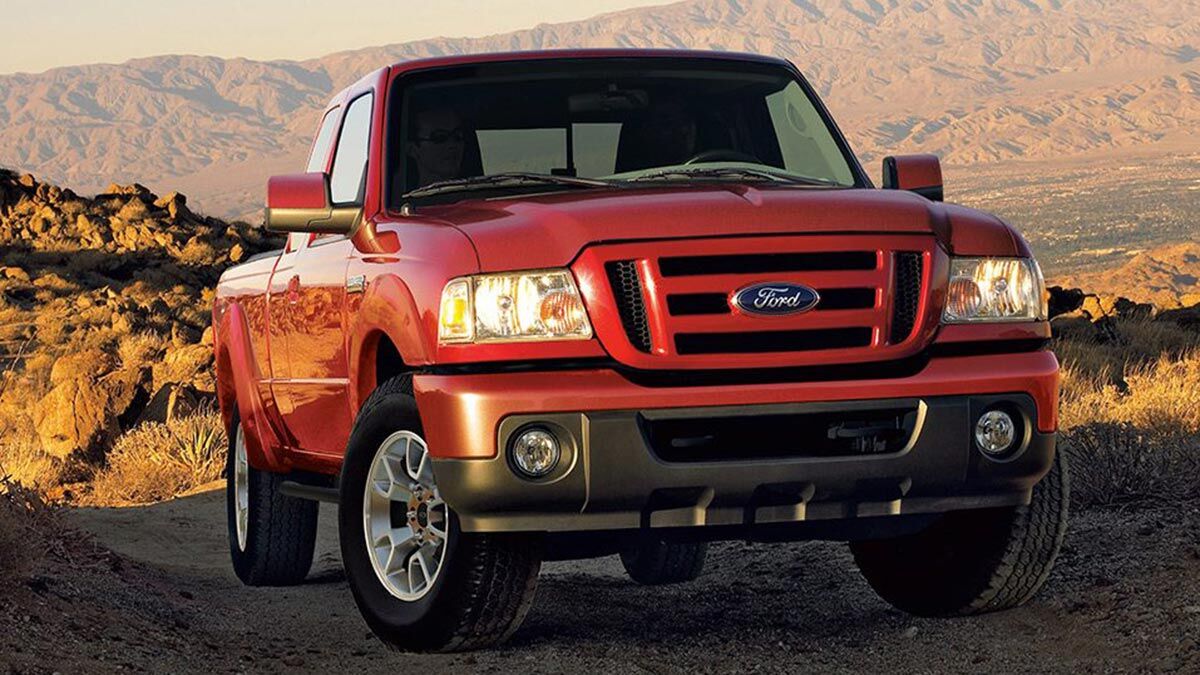
A third-generation Ranger is ideal for someone who needs the utility of a small pickup truck but not a lot of advanced tech or cutting-edge mechanicals.
Over a 13-year run, the third-generation Ranger undergoes many changes. Regular and SuperCab models are common to all years, but there are no crew cabs. From 1998 through 2001, a 2.5-liter 4-cylinder comes standard. After 2001, a 2.3-liter engine replaces it. Two V6 options—3.0-liter and 4.0-liter V6 — are optional over the entire model run. All three engines offer a choice of a manual or automatic transmission and 4-wheel drive.
The previous generation’s twin I-beam front suspension gets replaced by a short-/long-arm setup.
You won’t find advanced driver aids or digital dashboards, but these years have features like airbags, traction and stability control, and electronic shift-on-the-fly 4-wheel drive.
The 2001 Ranger gets a facelift, a revised 4.0-liter V6 with a single overhead cam, and new options, like the FX4 off-road package.
Popular trim names throughout this generation include the XL, XLT, FX4, and Edge. Towing capacity maxes out around 6,000 pounds with the 4.0-liter V6, around 3,200 pounds with the 3.0-liter V6, and 2,200 pounds with the 2.3-liter 4-cylinder.
Model-Year Changes:
2011: All Ranger trims gain front seat-mounted side airbags, AdvanceTrac with roll stability control, and a Class III trailer hitch.
2010: Ford removes popular options like the Pioneer audio upgrade and FX4 package.
2009: FX4 and Sport trims gain SiriusXM, and models with the 4.0-liter V6 gain a Class III trailer hitch.
2008: Ford drops the STX package.
2007: The Ranger gains front airbags, a tire pressure monitor, and an auxiliary input jack.
2006: No significant changes.
2005: Ford drops the Flareside option.
2004: The Ranger gets a significant refresh, with new options like leather upholstery, a Pioneer audio system, and 4-wheel drive for the Tremor trim, which also gains MP3 CD capability for its 510-watt audio system. A new option is Ford’s electronic shift-on-the-fly 4-wheel drive.
2003: Minor upgrades include.
2002: The FX4 package debuts, featuring Bilstein shocks, skid plates, a limited-slip differential, and 31-inch A/T tires.
2001: A new 2.3-liter 4-cylinder engine and revised 4.0-liter V6 mark the major changes.
2000: Minor cosmetic and package revisions.
1999: Ford 86s the Splash and adds E85 capability to the 3.0-liter V6.
See 1998-2011 Ford Ranger trucks near you.
Ford Ranger: The Early Years
Second Generation (1993-1997)
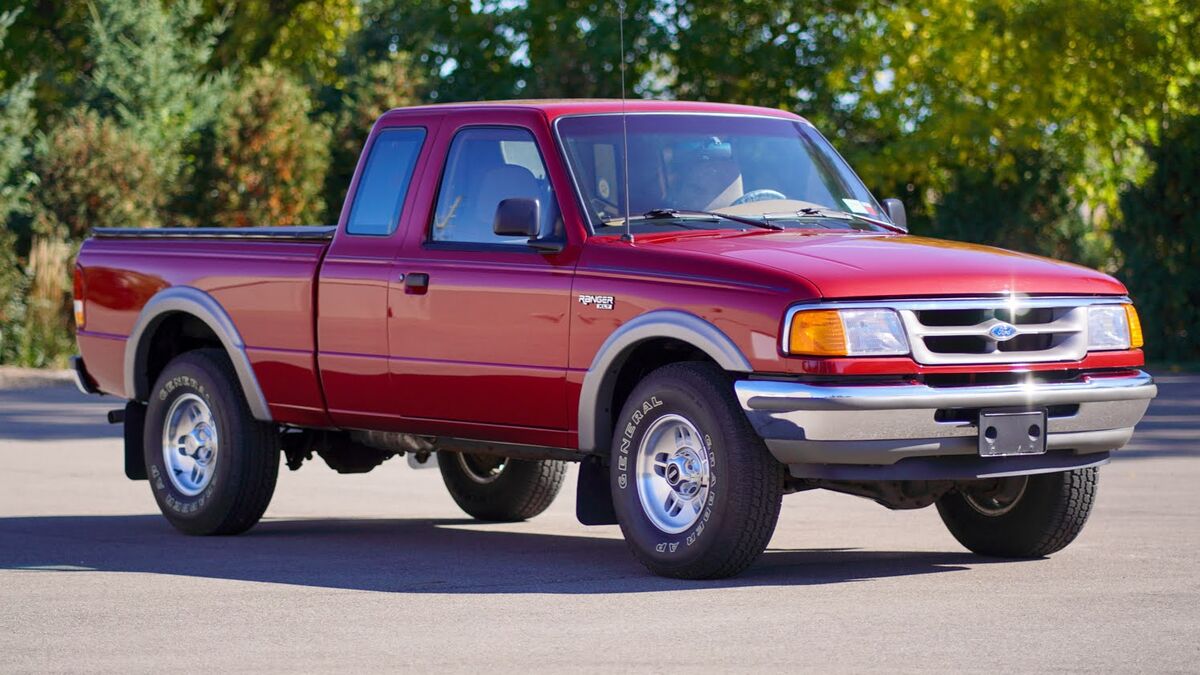
The second-generation Ford Ranger is a surprisingly robust little truck. However, at this age, most are either high-mileage beaters or sitting in scrap yards. If you can find one in decent shape, it may be worth a few grand.
When it debuted, the second-generation Ranger was fitted with all-new sheet metal, although most of the frame, suspension, and most engines carried over from the first generation. The standard powertrain is a 2.3-liter 4-cylinder, with the 3.0-liter and 4.0-liter V6 optional. The 4.0-liter is the best choice for this truck. It has a good reliability and power delivery record and can be matched to either a 4-speed automatic or a 5-speed manual.
You’ll find three body styles: Regular Cab, SuperCab, and Flareside.
Base model 4x4s use manual locking hubs. However, some later high-end trims employ electronic hubs via a shift-on-the-fly system that was prone to failure, prompting many owners to switch back to manual hubs.
First Generation (1983-1992)
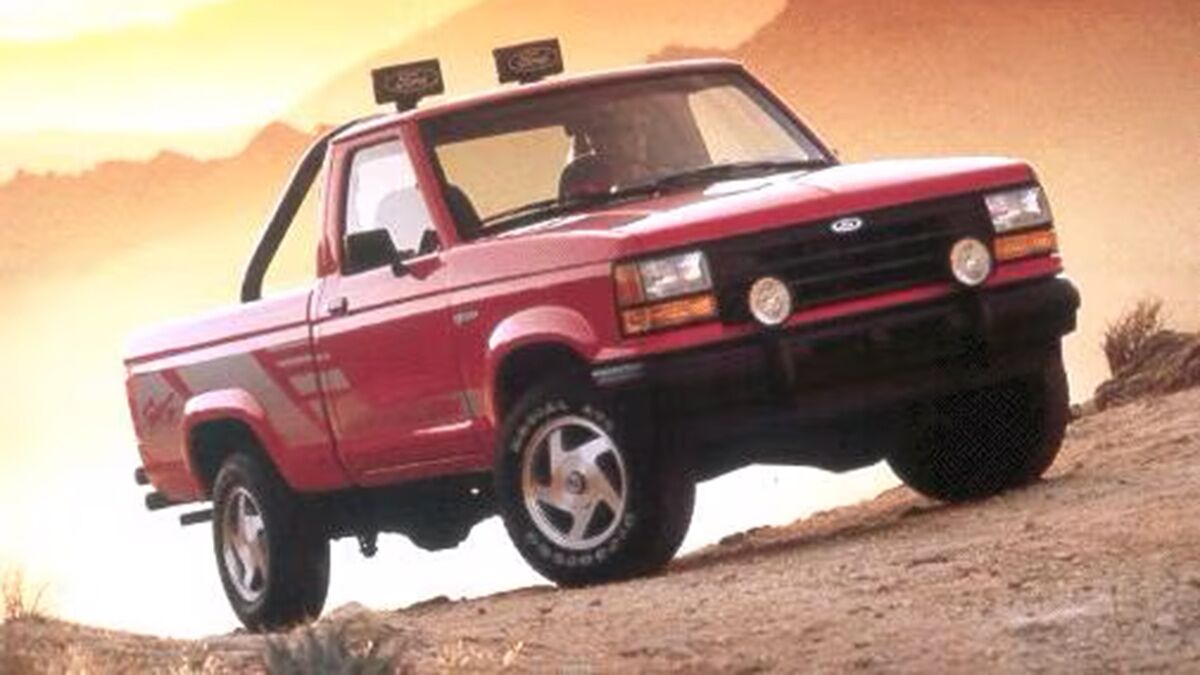
The original Ford Ranger is a tough little truck that put Ford on the map as a credible contender with the Toyota Pickup. The Ranger offered several configurations and three wheelbases: Regular Cab with a 6-foot bed, Regular Cab with a 7-foot bed, and SuperCab with a 6-foot cab.
Ford offered several engines during the first generation’s run, including a 2.0-liter and 2.3-liter 4-cylinder, 2.7-liter, 2.9-liter, 3.0-liter, and 4.0-liter V6, and one diesel option sourced from Mazda.
This generation is becoming a collectible, especially the higher-end trims with plush interiors. There are not many left out there, so the odds are that if you find one in good to excellent condition, the owner will be asking a pretty penny for the truck.
See classic Ford Ranger trucks near you.
What’s the Most Weight a Ford Ranger Can Tow and Haul?
The 2019 and newer Rangers have a max tow rating of 7,500 pounds and a max payload of 1,860 pounds (4×2 SuperCab). The SuperCrew 4X4 has the lowest payload at 1,560 pounds.
The third-generation Ranger’s max towing is around 6,000 pounds (4×2 with the 4.0-liter V6 and Trailer Tow Package), and the max payload is 1,660 pounds (4×2 Regular Cab with the 2.3-liter engine).
RELATED: Best Ford Maverick Years to Buy Used
What Is the Longest Bed I Can Get on the Ranger?
That depends on the trim and model year. On the 2024 and newer, a 5-foot bed is the only choice. The 2019-2023 Ranger offers two choices: a 5-foot bed on the SuperCrew and a 6-foot bed on the SuperCab. The longest available bed belongs to the first three generations, which offer a 7-foot bed.
RELATED: Best Ford F-150 Years to Buy Used
What Are the Years to Avoid Buying a Used Ford Ranger?
The 1991-2001 Ford Ranger trucks have more than their fair share of problems, including transmission issues and electrical gremlins. The 2002-2005 models also have some problems, mainly with the timing chain on the 4.0-liter, durability issues with the automatic transmission, and front suspension wear. The 2019 and 2020 Rangers have a few first-model-year bugs that Ford later worked out. These include complaints about rough or shuddering transmission gear shifts and build quality issues regarding poorly fitting rear doors and paint flaking.
See Ford Ranger trucks near you.











